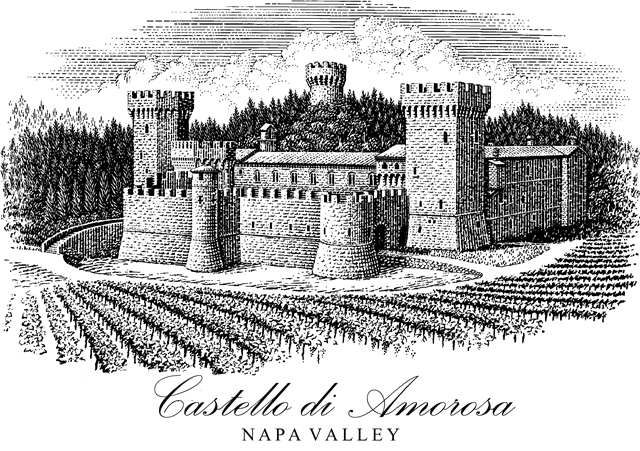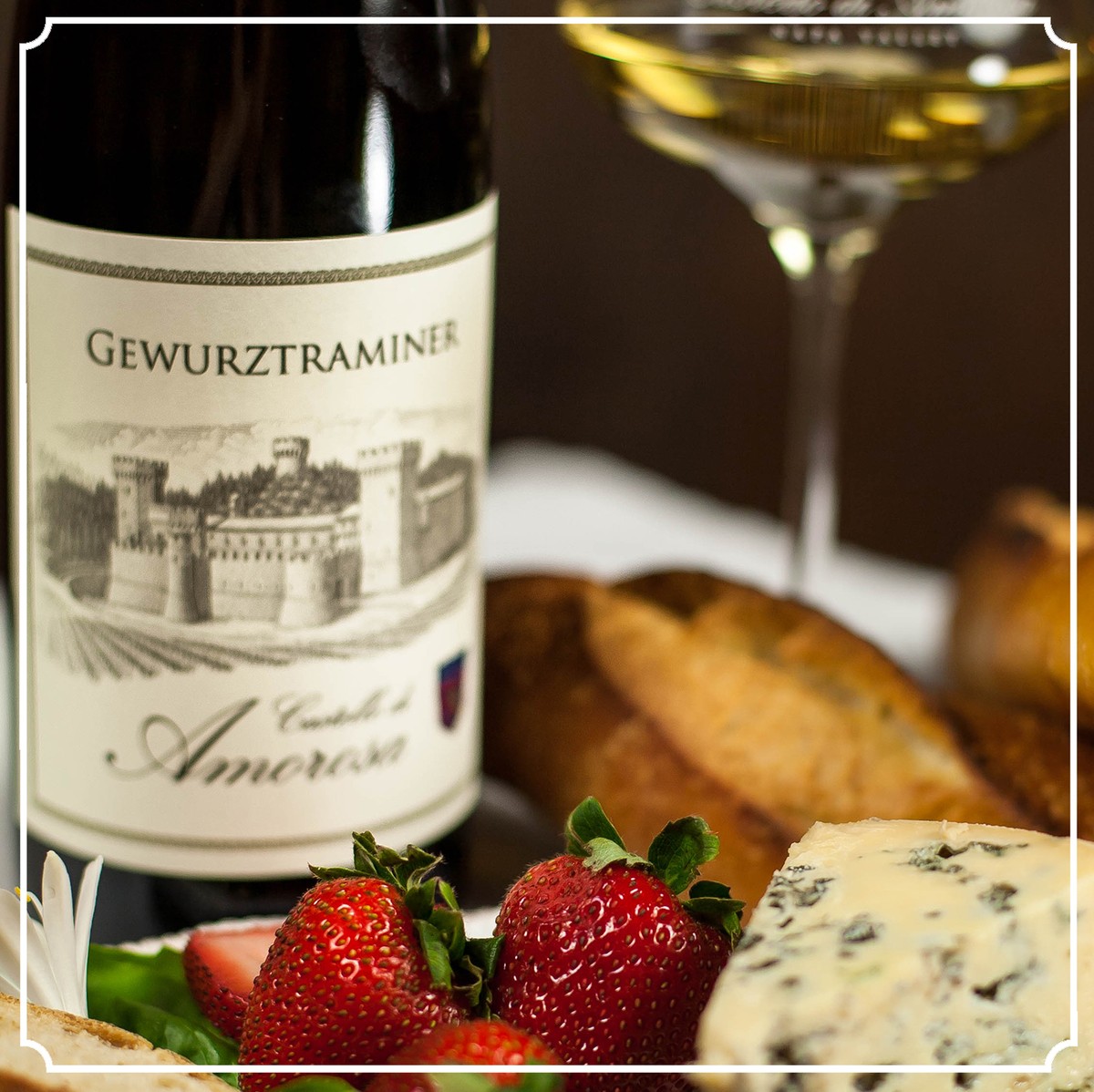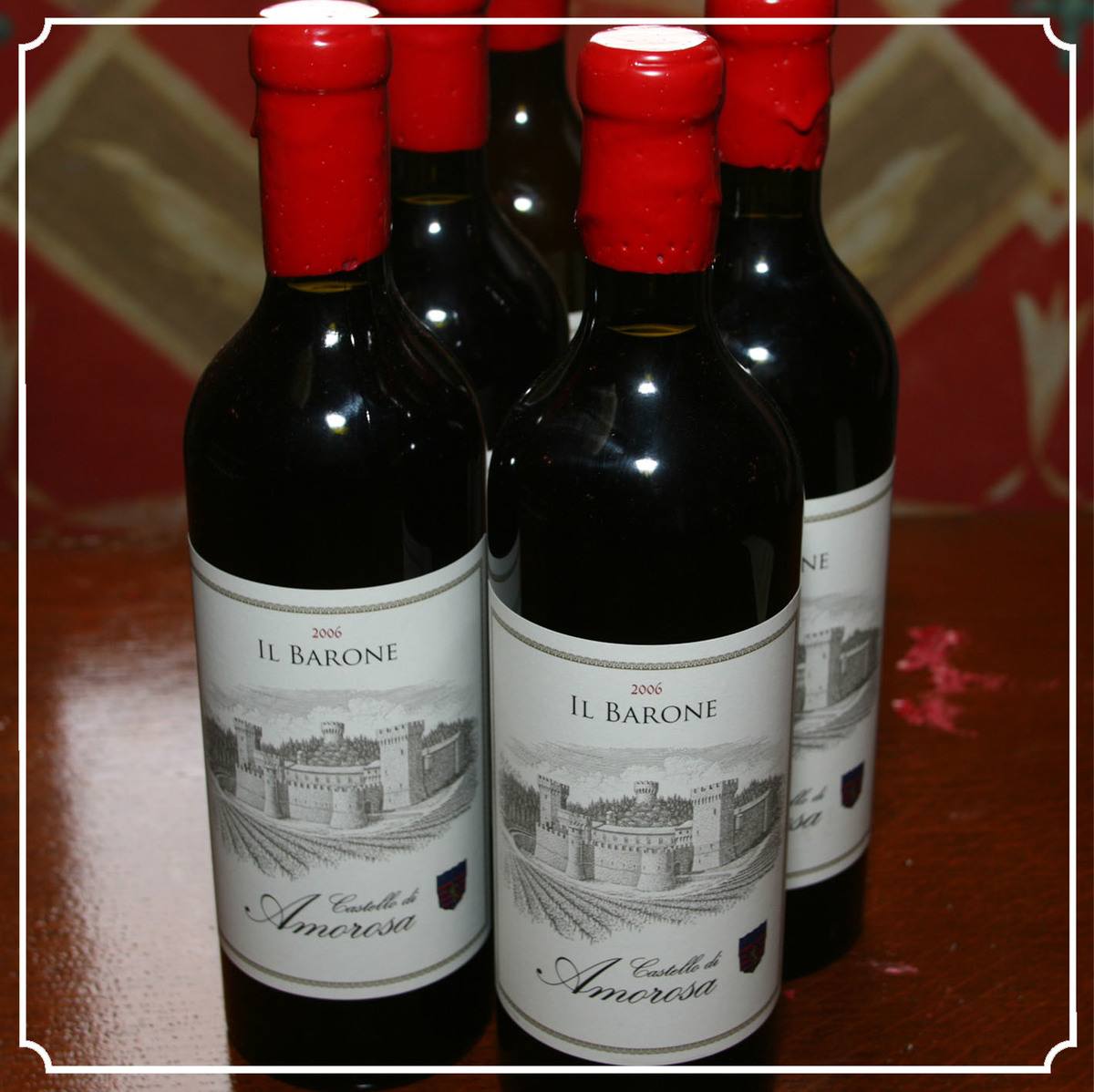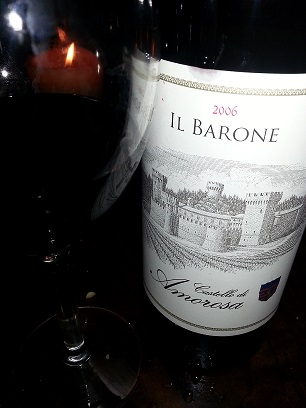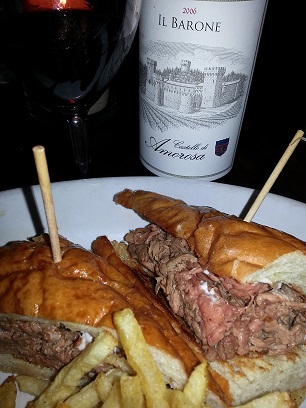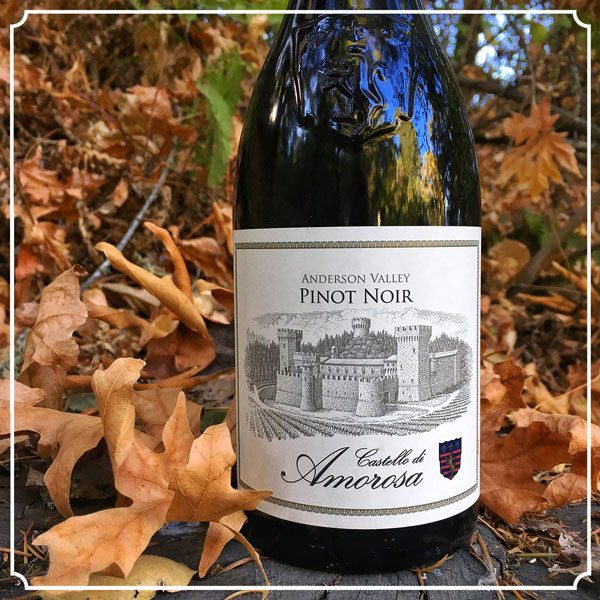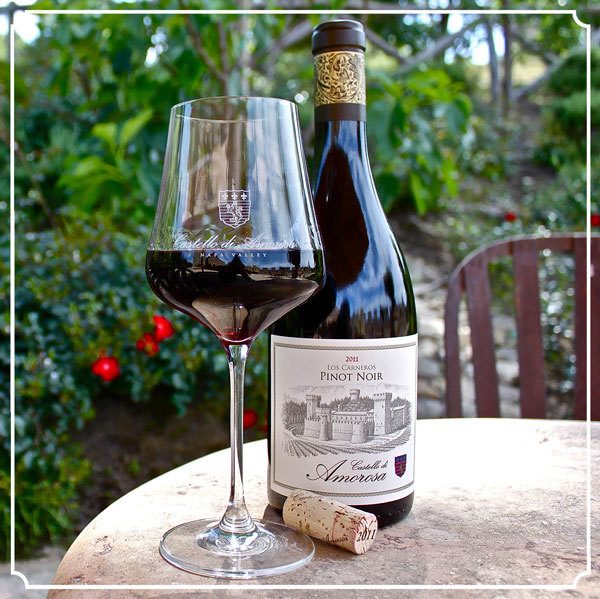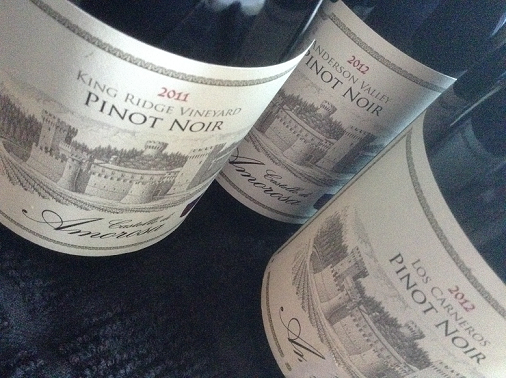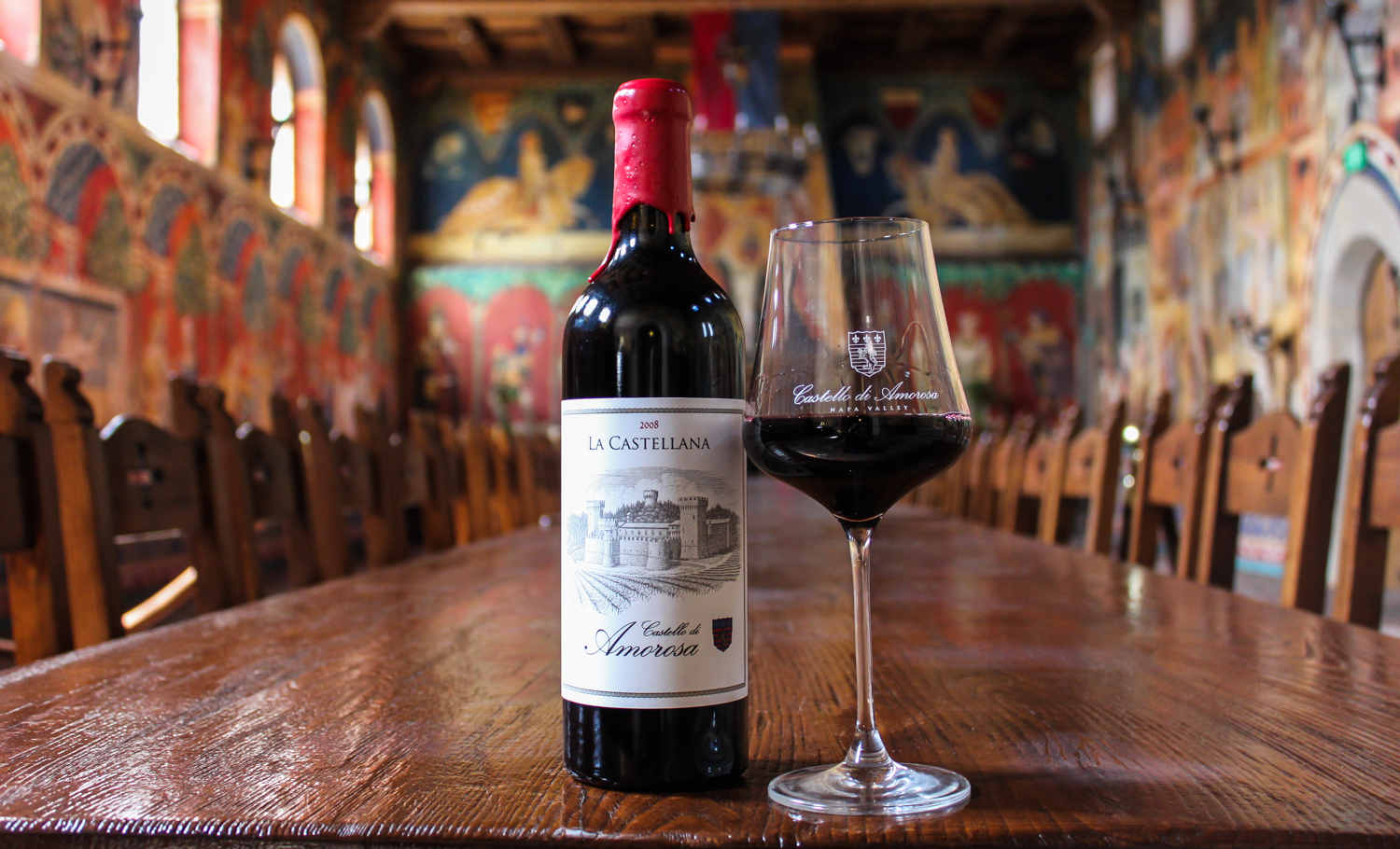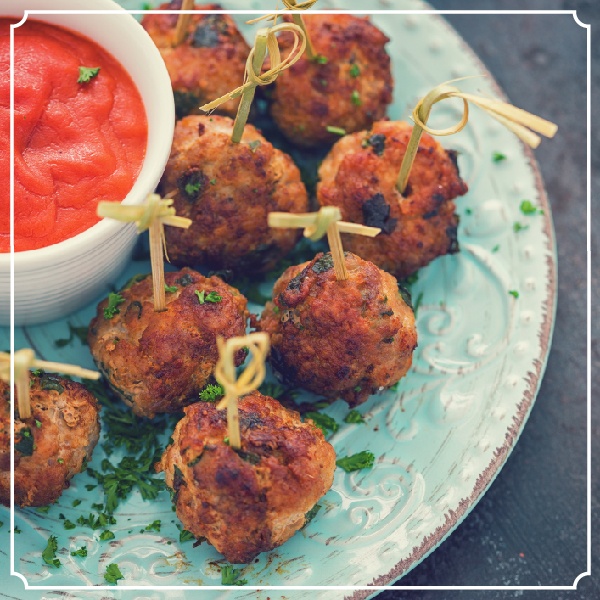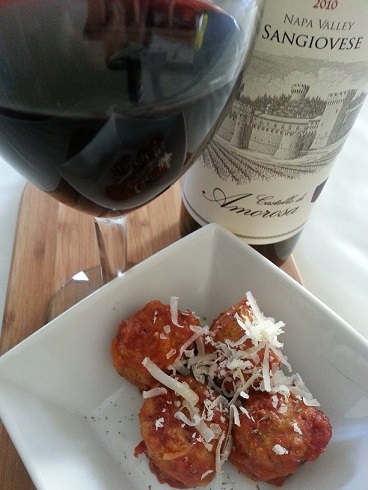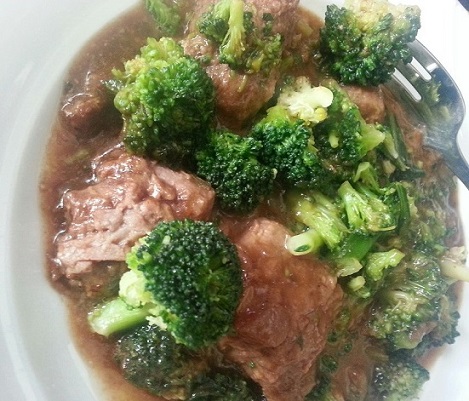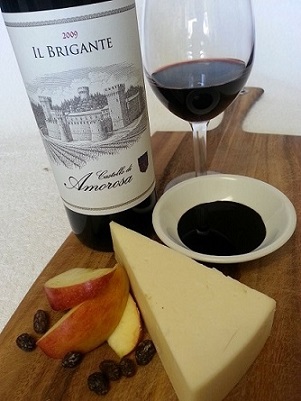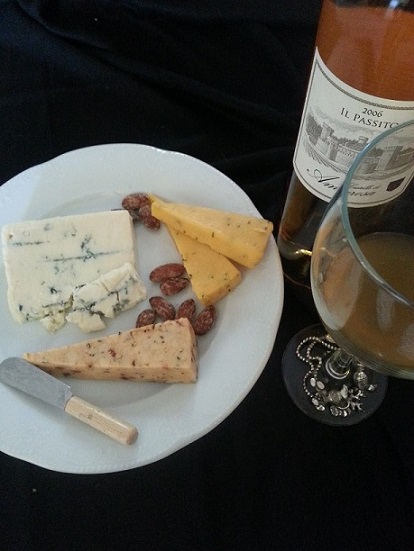Grasping Gewürztraminer

Mary Davidek
Grasping Gewürztraminer
Gewürztraminer, misunderstood and often mispronounced, how did such a unique grape come to be so abundant in modern winemaking and in such diverse regions?
First of all to understand the grape we must dissect the name itself. The German language can be quite redundant, often running a number of words together to create one word. For a glimpse into this as well as a little fun, try this link– Click Here
(Imagine if Barbara served this with Barbera!)
To complicate this further and make matters even more confusing, Gewürztraminer is actually Italian!
To explain:
Near the tip of the Adige Valley on the shores of Lake Balzano, lies the town of Termeno aka Tramin. Since the area is only a few miles from the Austrian border, and the land has been occupied by Austria several times (pick a war, any war), the town is called Tramin in German. In fact every mountain, river, street, town or other landmark is named in Italian AND German and because of this cross-culture the denizens of this region are bilingual. To translate:
The name of the town is Tramin…
“er” means from in German…
“gewürz” is German for “spice”
There you have it… “the spiced grape from Tramin”
GEWÜRZTRAMINER (guh-VURTS-trah-mee-ner)
To clarify; a German word for an Italian grape grown in Austria, I mean Italy! This is confusing.
Enough with geography– let’s talk wine.
Gewürztraminer is known for its crisp pear and apple notes, spicy attributes, intense fragrance and distinct color. Gewürztraminer is commonly associated with sweet wine, however, Gewürz is made in different styles depending on the level of ripeness at harvest .When picked late in the season like Castello’s Late Harvest Gewürztraminer this wine displays honey-apple with succulent peach nectar-like qualities. Perfect with a not too sweet desert or a cheese course…or combined into one grand finale.
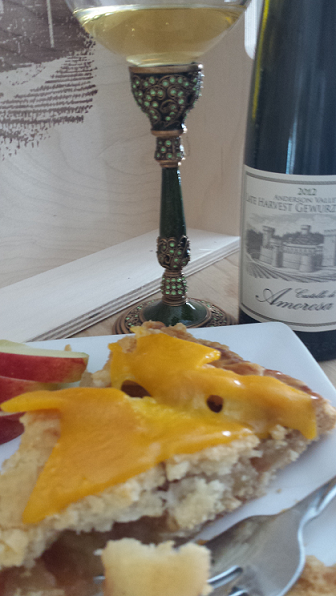
Keep it a bit savory with this sweetie. Remember, apple pie without the cheese is like a kiss without a squeeze.
An off dry or slightly sweet Gewürztraminer like Dolcino is harvested at normal sugar levels and fermented to leave a bit of residual sugar. This is my choice for pairing with spicy main dishes like Andouille Sausage Jambalaya.
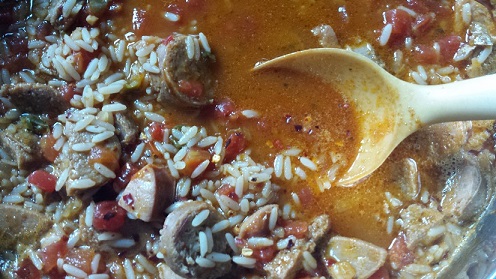
The classic dry Gewürztraminer may be the most versatile and my personal favorite. This wine displays ginger, crisp stone fruits and a tell-tale hint of lychee. Mix it up a bit with this mixed up wine, rich and hearty Italian dishes with savory basil and lemon in a light cream sauce are contrasted perfectly with classic dry Gewürz. Farfalle pasta catches all of the goodness in each and every bite… with a sip of Gerwürz….das schmeckt gut. Or is it delizioso?…well, in any language–yum!
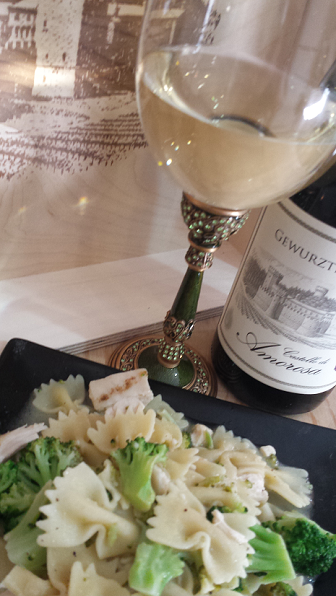
What Moves You

Mary Davidek
What Moves You: The 2014 South Napa Valley Earthquake
“Movement: an act of changing physical location or position or of having this changed”
I have been exposed to substantial movement lately. As most are aware, early in the morning of Sunday, August 24 a 6.1 magnitude earthquake jolted Napa Valley from its pre-dawn slumber; the largest earthquake in Northern California in 25 years with the southern end of Napa Valley at the epicenter. The quaint downtown area of Napa sustained major damage with shocks of destruction to outlying hotels, grocery stores, homes, schools, and wineries. Some of the damage inflicted was to buildings with construction dating to pre gold rush era while others were newer buildings with modern architecture and aesthetics. The quake’s movement was quick and destructive as it ripped through this otherwise sleepy valley. Fortunately, there were no human casualties, and the injuries, although numerous, were not life-threatening. My husband and I were in Napa in the rural northeast end at the base of Mt George near Coombsville, a bit removed from the hardest hit areas but we knew ….this was a big one
Fortunately, our fragile belongings were safely sequestered up-valley just 2 days before the quake (!) we had packed several storage and moving boxes and relocated them to our new residence in St Helena. The northern part of the valley shook and rattled but the quake did not have the ferocity it exacted upon Napa. Back in Napa, we were safe, the cats were a bit freaked out but unharmed and our belongings were secure in their new hillside abode.
As a native Californian, I am no stranger to earthquakes but this one hit me in a peculiar way, this earthquake was symbolic. I was physically and emotionally drained from weeks of packing, moving, and organizing. This movement sent tremors of emotion and exhaustion, the aftershocks seemed relentless from weeks and days of sorting through old photos and memorabilia. These aftershocks triggered moments of reminiscence and nostalgia; earthquakes to my soul.
Along with long-forgotten mementos, I also found a few heavily guarded bottles of wine, treasures tucked away for the perfect moment. Buried far within the wine cooler I glimpsed a familiar red wax, yes, I had to dig deep for this gem. I began at Castello di Amorosa in the spring of 2008 and on one record-breaking extraordinarily challenging day we were all rewarded with a bottle of wine of our choosing…any bottle. I selected a 2006 Il Barone and tucked it away for a rainy day. Obviously, I had forgotten it. I recalled this cabernet from it its youth; firm, young, chewy tannins but intensely cloaked with hidden layers of brooding black fruit not quite ready to reveal. The rainy day had come and gone but for this bottle, ‘no day but today’.
Movement. It is moving.
To celebrate our big move and to honor the recent big movement of Napa Valley I opened the rediscovered 2006 Il Barone. My husband and I sat on our deck overlooking the hills of St. Helena, we raised a glass to all we had accomplished and the movement sure to come.
It moved me.
The 2006 Il Barone has moved gracefully into a polished and plush Cabernet reminiscent of the balanced beauties of Napa Valley’s 1990s. With notes of ripe red berries and hints of smoke and leather, this wine has more to reveal in the coming years.
We finished the bottle at one of our favorite Napa Valley no corkage restaurants. A prime rib french dip with a bit of creamy horseradish and a side of fries was all this Cabernet needed to move us!
Mary Davidek C. S., S.W.
Desperately Seeking..

Mary Davidek
Desperately Seeking
Inspiration.
This is the time of year when writing a food and wine blog becomes a challenging task to complete rather than an opportunity for relaxed easy banter I usually tackle with enthusiasm. The weather is still quite warm but the nights now bring the crispness of autumn. Excitement for the fresh lighter fare of summer has given way to the anticipation of comforting fall favorites. Maybe it’s the angle of the late summer sun or the knowing that harvest is rapidly approaching. Labor Day is days away, summer is rounding third.
Suddenly– a change of season.
My creativity is obviously on a late summer vacation and my vapid thoughts are in need of inspiration.
So, I went to the grocery store and wandered the aisles….searching. How to bridge this canyon of bland? This growing crevasse of food and wine apathy. The space between. The blah. The doldrums.
Then, I saw it. A warm halo of light illuminating its golden perfection; a roasted chicken.
(Maybe the ‘warm halo of illuminating light’ was actually a warming oven?)
Few foods can adapt to the season…or to wine… quite like a roast chicken; a winged chameleon of flavor. Season with sea salt, black pepper and a touch of lemon juice. Refrigerate this bird for a few quick meals on the fly and serve with summer veggies and a cool crisp Pinot grigio. Added win–leftovers make yummy soft tacos!
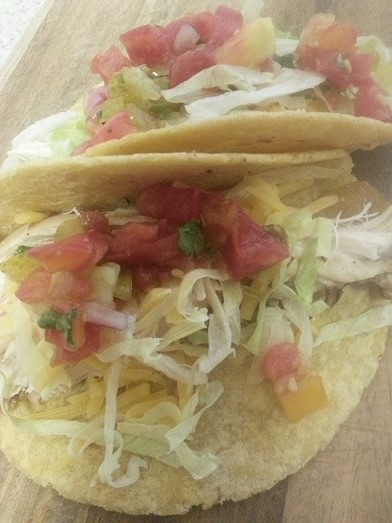
Let’s beef this chicken up. Root vegetables are a perfect hearty addition. Rub a touch garlic and rosemary to the skin of this bird. Cover with foil and pop in the oven for 10-15 minutes and serve with roasted potatoes. Pinot Noir and roast chicken is a time honored classic and nothing short of inspiring!
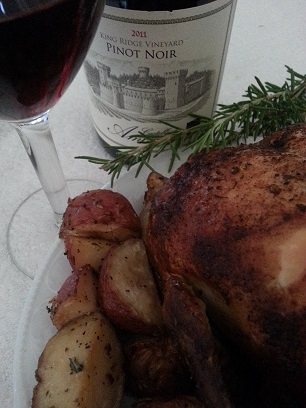
Mary Davidek C. S., S.W.
Storm The Castle—July 14th Is Bastille Day!

Mary Davidek
Storm The Castle—July 14th Is Bastille Day!
Most national days are in celebration of exactly what you would expect a ‘national’ day to celebrate. For example the national day of the United States, the 4th of July, marks the signing of a declaration of independence from a colonial power. Some countries mark the day the colonial power actually left their occupation for such freedom celebrations. Other countries like Germany and Italy celebrate unification and others like quirky Austria celebrate its declaration of neutrality. A handful of countries such as the United Kingdom and Denmark have no national holiday to celebrate. However, few countries can top France for the utter cool factor of its national day which commemorates the day an angry mob stormed a medieval castle prison known as the Bastille.

Angry mob storms the Bastille!
In France July 14, commonly referred to as la fête nationale, became an official holiday in 1880. From the beginning, speeches, parades, and fireworks, along with public revelry, were part of the celebration. Likewise, Francophiles throughout the world have taken up the observance of Bastille Day, celebrating with dinners of French cuisine, concerts of French music and enjoying all festivities with French wine.
Regardless of your origin, your nationality… your roots– It’s Bastille Day! Celebrate the onset of the French revolution in the spirit of equality and liberty. In honor of this national day, I have put aside my affinity for all things Italian and opened a couple of bottles of vin du France.
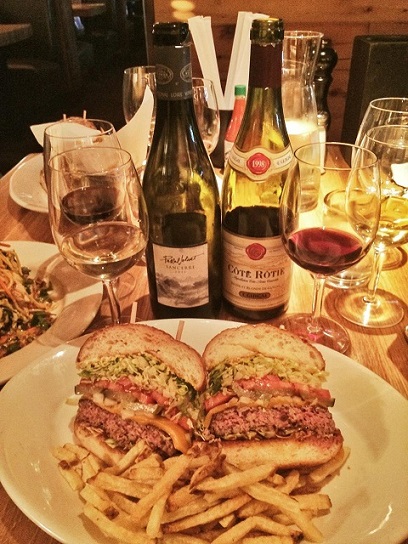
Okay, so maybe a hamburger is as American as it gets but the fries—definitely French!
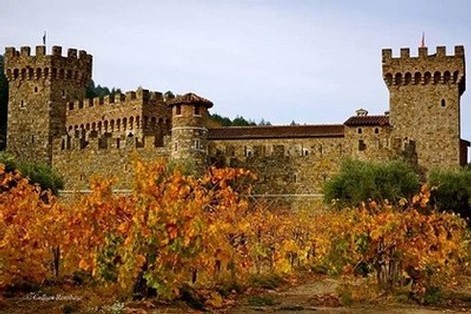
Castello di Amorosa– encircled by lovely vines and waiting to be stormed!
Summertime Wine and Pasta Pairings | Castello di Amorosa

Mary Davidek
Summertime Wine and Pasta Pairings | Castello di Amorosa
Summer is a time to relax and watch a baseball game, munch on a hotdog, linger over a backyard barbecue and indulge in a few guilt-free s’mores by the campfire. Heavy comfort foods traditionally don’t hold much appeal when the mercury climbs, but, with a few variations and use of fresh seasonal ingredients pasta is one pantry staple that is never out of season. True– pasta is a favorite comfort food in cold weather months. However, with quick and easy variations we can create light delicious meals which are easily transported for dining al fresco and provides yummy left-overs. As the temperature rises, simply exchange heavy additions for fresh seasonal veggies and farm fresh produce; corn, peas, tomatoes, and backyard herbs. And don’t put the red wine glasses away waiting for autumn’s first frost. Light-bodied reds like Pinot Noir and Sangiovese are just right with summertime favorites like King Salmon or pasta salads.
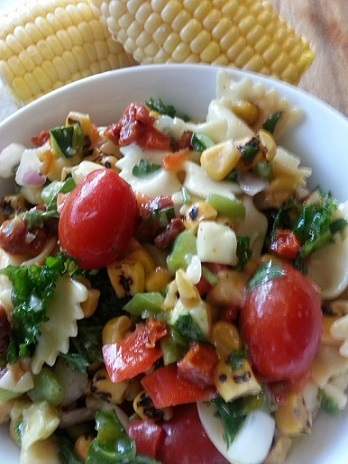
Make a pasta salad with garden fresh produce and serve with an ear of sweet summer corn. Experiment with salad-friendly shapes like rotelli or farfalle which helps grab the dressing and the veggies.
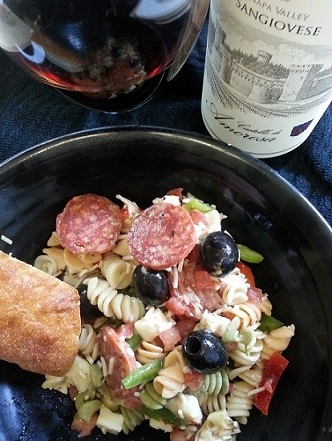
Build a heartier dish by adding Italian Salami, salty cheese or briny olives. Toss together in a light vinaigrette and serve with a tasty herb ciabatta. Castello di Amorosa’s Italian-inspired Napa Valley Sangiovese comes alive with this light but satisfying salad entrée. Serving temps are vitally important with these lower pigmented grapes. Target 62-65 degrees, this allows the bright fruit notes to shine through without becoming dulled by warmth.
Pinot Noir— The Art of Getting There

Mary Davidek
Pinot Noir— The Art of Getting There
“There is no ‘there’ there”. Gertrude Stein’s often quoted prose is commonly used to describe something that lacks soul, culture, life, or identity. While Ms. Stein was referring to the faceless existence of city-life, some critics have proclaimed this lament when speaking of grapes grown in and the wine making efforts of America.
The French speak of ‘terroir’ when referring to winemaking and the wines of France which is to say grapes are a reflection of the region in which they are grown; the soil, the climate, the aspect of a hillside, the amount of rain, the surrounding vegetation, etc. The United States’ AVA system has been criticized as nothing more than a weak effort to create a false sense of place in the wines produced — an illusion– as they state, there is nothing ‘there’.
*le sigh*
I decided to look beyond Cabernet Sauvignon, the reigning king of grapes for my initial attempt at disproving this theory and thus directed my attention to a varietal that, in my humble opinion, is ‘place’ personified. Pinot Noir, the thin skinned red wine grape of the Burgundy region of France has become increasingly popular with wine-buying wine-drinking Americans. It is a classic, elegant, food friendly wine—its enigmatic character and appeal as elusive as it is obvious.
Pinot Noir grapes are grown around the world but they flourish in cooler growing regions. In Oregon, the Willamette Valley is nearly the same latitude as the famed Burgundy region of France and has become synonymous with world class Pinot Noir. Oregon producers have found their sense of place as the Pinot fruit embodies the sophistication and finesse of a great Burgundy yet displays layered earth and bright red fruit summoning unrestrained California productions.
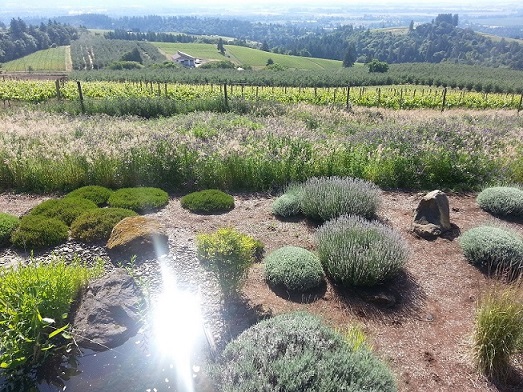
The rolling green hills of temperate Willamette Valley provide the perfect place for cool-climate loving Pinot Noir
California Pinot Noir is more mercurial stylistically without any one style from this large and geographically diverse growing area. From Santa Barbara and the Central Coast to the south and Sonoma County and Anderson Valley in the northern half of the state, diverse topography and weather patterns separate this region of more than 450 miles. From Santa Barbara and the Central Coast we find opulent wines with definitive Pinot Noir fruit that reflects its warmer and more southern roots with a controlled strength. Cooled by the San Pablo Bay, the Carneros region straddles both Napa and Sonoma Valley and shows hints of spice and brightness unique to these cooler vineyard sites of this sun-drenched area. North of Carneros we find the Sonoma Coast where Pinot shows depth and earthy complexity with some of California’s most acclaimed Pinot Noir producers firmly planted in this lush pacific expanse. Further north of Sonoma we find California’s newest Burgundy-like super star in the highly praised and sought after Anderson Valley of Mendocino County. Here the ocean cooled valley floor rarely sees summer temps above 85 degrees….even in the height of the season. Pacific marine influence floods the valley floor with morning coastal fog providing slow even ripening. Enthusiasts agree this temperate region yields fruit of subtle distinction.
A Pinot Noir trio from Castello di Amorosa; Los Carneros, Anderson Valley and the highly acclaimed King Ridge of Sonoma Coast. Each with expressive fruit and character from unique vineyard locations.
As far as American winemaking efforts, maybe we have not come up with anything quite as mysterious as ‘terroir’ to encapsulate the distinctive place of our wines….maybe we never will. But, as the saying goes, sometimes the best part of the journey is getting there.
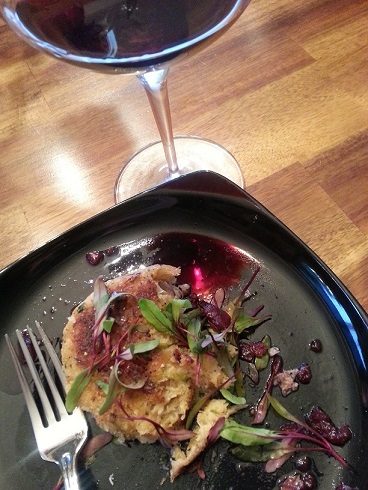
Dungeness Crabcakes with Rainier Cherry Pinot Noir Reduction
For the reduction-
- 10-15 ripe cherries, pitted and chopped
- 10 ounces Pinot Noir
- 1 Tbsp Honey
- 1 Tbsp Seasoned Rice Vinegar
- Pink peppercorn to taste
Add all ingredients to sauce pan. Slowly reduce over medium heat.
Mary Davidek C. S., S.W.
The Perfect Blend

Mary Davidek
The Perfect Wine Blend: Blending Grapes & Varietals
We are getting ready for a wedding in our family, my step-daughter is getting married in September. Last week my husband and I had a pre-nuptial trip to Boise, Idaho for talks of wedding plans. This was all to be considered and discussed at a dinner which included my husband’s first wife along with the future parents-in- law, yikes! Decisions had to be made on apparel, cakes, invitations, shoes, music, relatives and ever-growing extended families. The evening was an interesting and diverse mix of people with varied relationships and ages spanning from 25 to 65. There were enough backgrounds and life events to fill a night’s conversations with entertaining and thought-provoking stories. No topic was out of bounds or taboo as we covered everything from the best way to ripen avocados to current affairs to wedding invitations. It was a great evening of fun, laughter and growth. As we were tidying up my step-daughter said to me, “wow, tonight was certainly an interesting blend”.
Which, of course, made me think about wine. Totally understandable as the evening had consisted of at least 4 different bottles of vino and they were– blends. While some varietals like Pinot Noir or Chardonnay are best as a single varietal because blending can overwhelm the unique characteristics of thin-skinned grapes, many varietals suffer from this imposed solitary confinement. Wine blends often deliver increased complexity and are more interesting than single varietal wines. In fact, some of the world’s greatest wines are made from a blend of grapes rather than a single varietal.
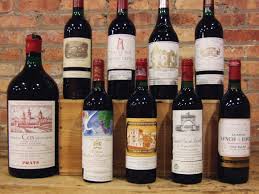
Some of the most prestigious wines in the world are blends. Bordeaux wines from the left bank of the Gironde River in France are typically blends of Cabernet Sauvignon with Merlot and Cabernet Franc. When blending Bordeaux varietals in the U.S. they are known as Meritage blends.The pronunciation is often subject of debate but the correct usage rhymes with heritage.
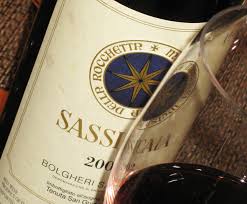
Sassicaia is approximately 15% Cabernet Franc blended with Cabernet Sauvignon to create one of the most sought after and priciest Super Tuscan wines made.
Robert Parker of Wine Advocate described Castello di Amorosa ‘s Super Tuscan blend, La Castellana as “Full-bodied, lush and seductive”. La Castellana marries Sangiovese and Merlot with Cabernet Sauvignon to create this blended masterpiece.
Blending grapes gives the advantage and potential of adding complexity to the resulting wine blend and provides a tapestry of multiple flavors and aromatics. It also offers an opportunity to achieve balance– the happy ‘marriage’ of fruit, acid, tannin, alcohol, and oak that makes great wines sing in perfect harmonic splendor and not-so-great wines seem full of wrong notes and missed opportunities.
People and grapes, we’re not so different.
Mama Mia!

Mary Davidek
Mama mia!
The great thing about a blog; I am able to write about whatever I am feeling or thinking or what may be inspiring me. Given the time of year and last week’s heat wave I considered an esoteric look at grilling and barbecue. But, in all honesty, the outdoor grill has never has been my forte. Cinco de Mayo had possibilities as cuisine from south of the border is infinitely more inspirational to me than a gas grill, a Weber or a hibachi–and practically anything made into a taco is delicious. However, as we approach Mother’s Day, I decided to take it home.
My Mom was a great cook which was no minor achievement for an Irish woman who married into an entirely Italian family. I’m not simply referring to pot roast or a weekday casserole. No, she was creative in her use of spices and seasoning. Mom was instinctively technically correct and taught me the importance of making food visually appealing before we had top celebrity chef royalty or cable networks devoted to food with culinary game shows and cooking competitions. As a child I would sit and play quietly each afternoon while my mom watched Julia Child or Graham Kerr aka The Galloping Gourmet. As they explained the dish featured on the episode she would comment “oooh, I think I will try that on Dad’s birthday” or “Julia is sure using a lot of cream today!”
My mom was also a great hostess and loved to entertain. Monthly cocktail parties were particularly exciting for me. Although I may not have sampled the libations, the yummy and abundant little treats made for the occasion were so tasty it was just cause for excitement– especially if mom’s delicious mini meatballs were on the menu! I knew while the adults milled about, that evening I would host a private party of one with my own little array of goods. With a Shirley Temple stuffed with more cherries than liquid in hand, off I would go to my bedroom for an evening of sitcoms du jour and yummy bits from the gala. Mom checked on me to replenish my sustenance but eventually I would nod off to the sound of canned laughter from the TV and the comforting banter of my parents and friends enjoying a festive evening in the background.
I guess I inherited mom’s love of entertaining and hopefully, her talent of being a great hostess as I have the distinct joy and pleasure of entertaining guests at the Castello on the ‘Royal Paring‘, a food and wine pairing experience. With one of the most beautiful settings in the world as my backdrop, and at times with a lump in my throat, I envision my mom smiling and nodding with approval at a job well done.
Happy Mother’s Day.
Salud.
Recipe: Italian Style Chicken Mini Meatballs
Pairing Wine with Vegetables | Castello di Amorosa

Mary Davidek
My Beef with Vegetables
When pairing wine and food, while vegetables are certainly a seasonal selection; wine and vegetables rarely makes a reasonable connection. When it comes to compatibility, wine and veggies make for a challenging relationship. However, with a little pairing intervention, we can salvage this savory dilemma.
First, let’s discuss the easy ones; mushrooms, potatoes and eggplant. Denser, heavier and earthier vegetables often used in heartier dishes. Think of the earthy quality of Pinot Noir to pair with these meaty veggies. A hearty mushroom like Portobello can even take on Bordeaux varietals like Merlot and Cabernet Sauvignon.
With green vegetables, play off the green flavors of these veggies by grilling and topping with a balsamic glaze. For richness add a cream sauce or cheese (there, I finally said it…you’ve been waiting for it!). These green flavors work well with Pinot Bianco or Pinot Grigio which often have notes of green fruit and provide a less aggressive palate then grassy and citrusy Sauvignon Blanc.
Asparagus and Artichokes. These delicious little buggers get their own space as they are notoriously difficult to pair with wine. This is due to cynarin. Cynarin is a phenolic acid compound found in the green leaves and seeds of artichokes and asparagus which gives a sweet flavor to these yummy vegetables. However, it can be challenging to complement these notes with wine because the sweetness is not from actual sugars and it makes most wines, even those with low levels of residual sugar, taste bitter. A sure way to contrast these flavors is with spicy aioli, a creamy dip, or a rich sauce. For wine, try an Austrian, Gruner Veltiner. Don’t underestimate this peppery white, Gruners are not to be taken lightly. This polished Austrian has attitude to spare and can finesse the most fickle flavors–even artichokes and asparagus.
If the addition of sauce, cheese, and cream is not an option as it can defeat the benevolent intentions of serving and eating vegetables, fear not, I have a sure fire way to make veggies almost wine-friendly; meat. Therein lies my beef with vegetables.
Merlot Beef with Broccoli
1 1/2 tablespoons cornstarch
1/4 teaspoon salt
1/4 teaspoon black pepper
3/4 pound sirloin beef tips, sliced against the grain 1/8 inch thick
3 tablespoons grapeseed oil
10 ounces broccoli florets
3 garlic cloves, chopped
3 tablespoons soy sauce
1/2 cup Merlot (approximately 4 ounces)
Toss together cornstarch, salt, pepper, and beef in a bowl until meat is coated. Heat 2 tablespoons oil in wok or sauté pan over medium high heat until hot but not smoking, stir-fry beef until just cooked through, approx. 1 minute. With a slotted spoon, transfer beef to another bowl and keep warm. Add remaining oil to sauté pan along with broccoli and garlic. Stir-fry until broccoli is just tender and garlic is pale golden, about 2 minutes. Add soy sauce and wine and bring to a low boil. Return meat to skillet. Stir until sauce is thickened.
I know; adding bacon is not playing fair but…absolutely delicious wine pairing with vegetables.
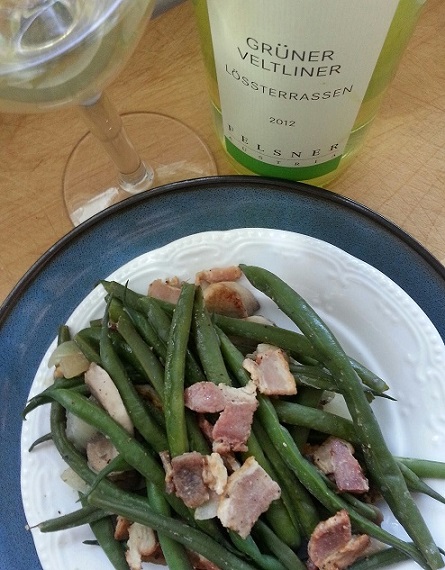
A little food and wine levity. When all else fails…..go back to the basics!
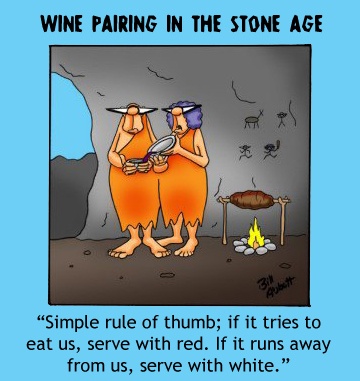
Cheese and Wine Whiz

Mary Davidek
A Royal Trio: Bread, Wine and Cheese
Cheese. It seems recently I’ve been spending a lot of time thinking about it, researching it, eating it, and writing about it. What makes this bacteria-induced, mold-laden, milk by-product so delicious in so many ways? From mac and cheese to grilled cheese sandwiches to omelets to enchiladas… is there anything good cheese doesn’t make better? Okay, I realize that is a rhetorical question which does not qualify an answer. Cheese-heads know of which I speak; plain, sliced, melted, and even burnt as one of my personal favorites is baked oozing cheese crusted on the edge of a big pan of lasagna.
In a word; cheese is yummy!
Cheese is not to be relegated to an also ran or a p.s. it is not Ed Mac Mahon to Johnny. No, the cheese can stand alone. Consider this, if you serve bread and a glass of wine with cheese, you now have a meal once reserved for royalty or highly ranked officials of medieval Western Europe. They favored hard, well-aged, and slightly salty cheeses, Parmigiano-Reggiano anyone?
Perhaps it is these century-old roots at the foundation of this tasty trio’s designation as the ‘trinity of the table’; bread, wine and cheese. In fact, this mouth-watering combo has something in common aside from being absolutely delicious. Bread, wine and cheese depend on yeast and bacteria for their development. Without the changes brought about by fermentation bread would not rise, wine would be lacking alcohol and we would exist in a world devoid of cheese. Fortunately we live in a world of a cheese-lover’s Shangri-La!
This homage to fromage is not intended to be a crash-course of pairing wine and cheese, but, simply an occasion to open the proverbial windows of our palate and imagine the possibilities…
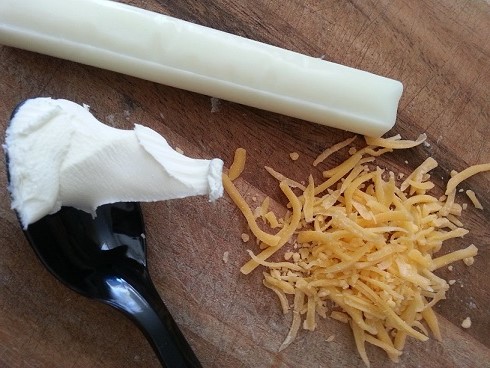
String, cream and grated–gateway cheeses which gave every American cheese-loving kid their humble beginning
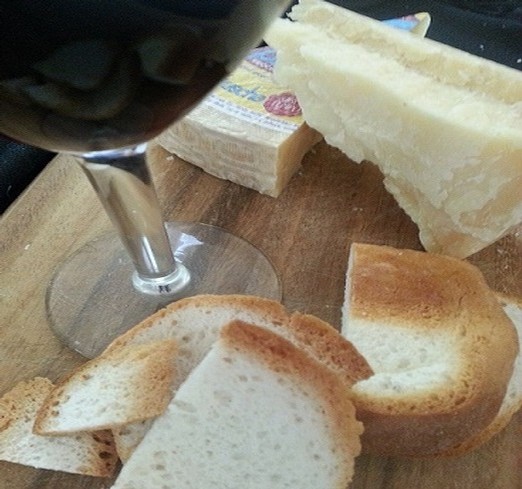
Eat like a king with this royal trio of bread, wine, and cheese. Bread? Nothing fancy, sometimes basic is all you need. Wine? Castello di Amorosa Il Brigante is just the right blend. Cheese? Piave Vecchio. Parmesan is well-suited for grating; Piave is slightly higher in milk fat which makes it a creamier option for a cheese board presentation.
Kick it up a notch. Add a reduction of balsamic to elevate this cheese pairing to a sweet and salty palate sensation.
The quintessential cheese plate typically offers a selection of 3 or more cheeses and makes use of color and texture. Combine a hard cheese and a double cream with a smoky cheddar. With the abundance of orange cheese, blue cheese and practically multicolored cheese; it is easy to add a splash of color.
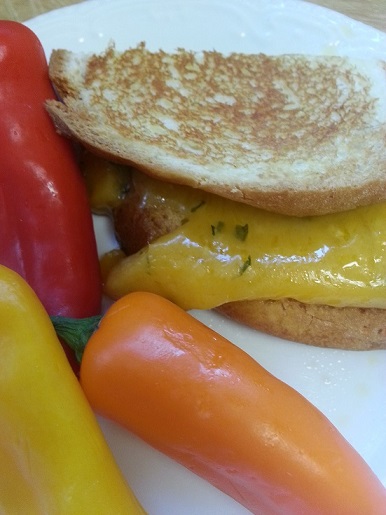
A conventional grilled cheese becomes an amazing culinary creation by using distinctive cheeses and experimenting with flavors. Pictured is Cotswold, a variation of Double Gloucester with the addition of chopped onions and chives. Cotswold is creamy, buttery, sweet and mild. Served with roasted sweet peppers- it is dangerously delicious.
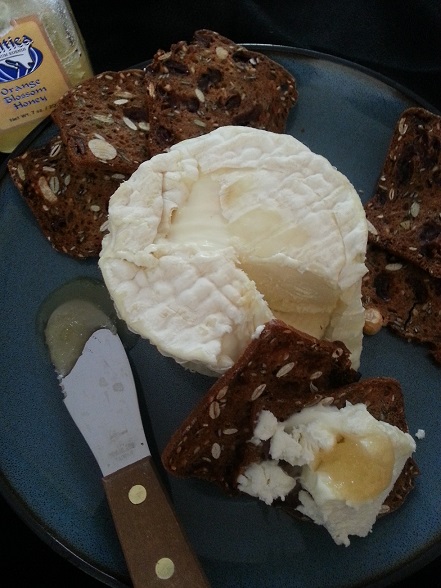
La Tur is an Italian triple cream from the Piedmont region of Italy and is made from an equal mixture of cow, sheep and goat milk. Typically with double and triple creams, I prefer a bright white wine like Pinot Bianco or a Dry Gewurztraminer. Here, I served La Tur with a dollop of orange blossom honey on a fig and oat cracker. Paired with Il Passito, the crown jewel of Castello di Amorosa– this was cheese and wine nirvana!
